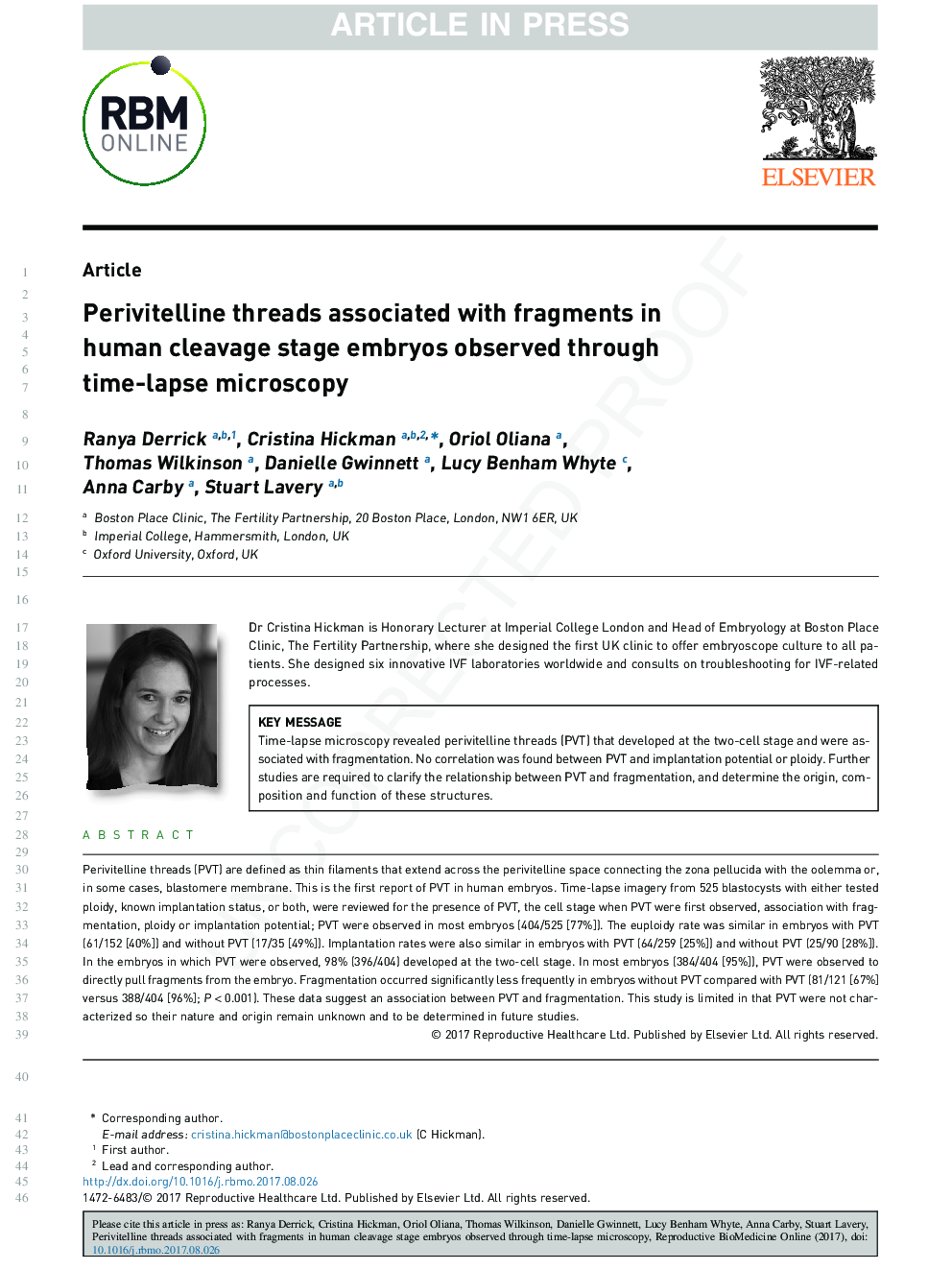| Article ID | Journal | Published Year | Pages | File Type |
|---|---|---|---|---|
| 8784115 | Reproductive BioMedicine Online | 2017 | 6 Pages |
Abstract
Perivitelline threads (PVT) are defined as thin filaments that extend across the perivitelline space connecting the zona pellucida with the oolemma or, in some cases, blastomere membrane. This is the first report of PVT in human embryos. Time-lapse imagery from 525 blastocysts with either tested ploidy, known implantation status, or both, were reviewed for the presence of PVT, the cell stage when PVT were first observed, association with fragmentation, ploidy or implantation potential; PVT were observed in most embryos (404/525 [77%]). The euploidy rate was similar in embryos with PVT (61/152 [40%]) and without PVT (17/35 [49%]). Implantation rates were also similar in embryos with PVT (64/259 [25%]) and without PVT (25/90 [28%]). In the embryos in which PVT were observed, 98% (396/404) developed at the two-cell stage. In most embryos (384/404 [95%]), PVT were observed to directly pull fragments from the embryo. Fragmentation occurred significantly less frequently in embryos without PVT compared with PVT (81/121 [67%] versus 388/404 [96%]; P < 0.001). These data suggest an association between PVT and fragmentation. This study is limited in that PVT were not characterized so their nature and origin remain unknown and to be determined in future studies.
Related Topics
Health Sciences
Medicine and Dentistry
Obstetrics, Gynecology and Women's Health
Authors
Ranya Derrick, Cristina Hickman, Oriol Oliana, Thomas Wilkinson, Danielle Gwinnett, Lucy Benham Whyte, Anna Carby, Stuart Lavery,
